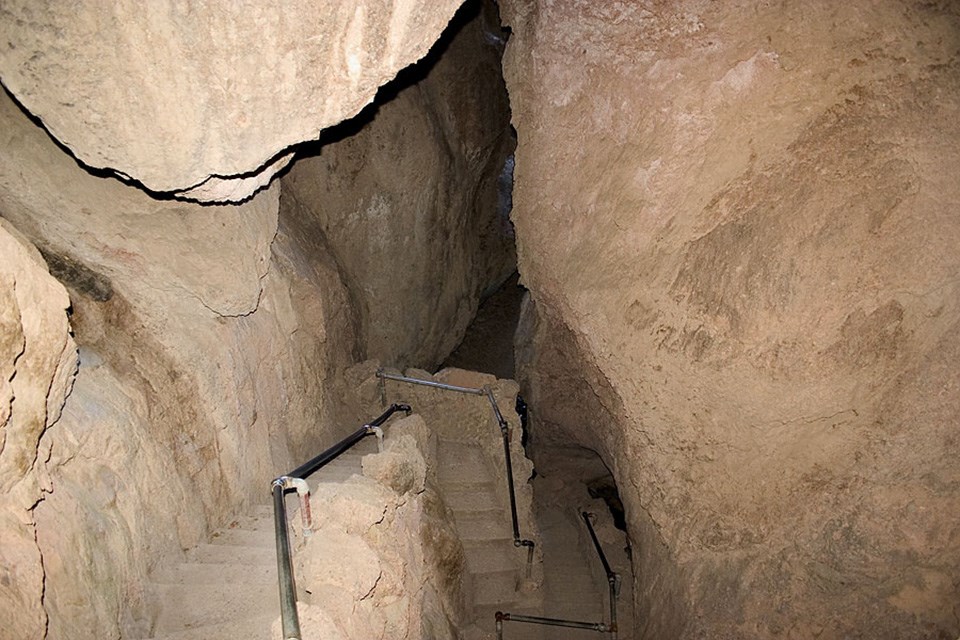Aarti is a traditional Hindu ritual. It involves singing hymns and waving lights before deities.
Aarti holds a special place in Hindu worship. This ritual connects devotees with the divine, creating a spiritual atmosphere. The rhythmic chants and the glow of lamps offer comfort and peace. Whether in temples or homes, Aarti brings people together in devotion.
It’s more than a practice; it’s a moment of reflection and unity. Understanding Aarti can deepen your appreciation of Hindu traditions. Join us as we explore the significance and beauty of Aarti in daily worship. Discover how this simple yet profound ritual has touched hearts for centuries. Let’s delve into the essence of Aarti and its impact on spiritual life.
Origins Of Aarti
The origins of Aarti date back to ancient times in India. This ritual involves offering light to deities, symbolizing the removal of darkness. Aarti is a key part of Hindu worship. It brings people together in devotion and reverence.
Ancient Traditions
Aarti’s roots can be traced to Vedic rituals. These ancient scriptures mention offerings of fire and light. In those times, people believed that light had divine power. This belief formed the basis of Aarti. Fire was seen as a purifier and a connection to the divine.
In temples, priests conducted these rituals with great care. They used lamps filled with ghee or oil. These lamps were then waved in front of idols. The movement of the lamp symbolized the cyclical nature of life. It represented the sun’s journey and the endless cycle of creation.
Cultural Significance
Aarti holds deep cultural significance in Indian society. It is not just a religious act, but a communal one. During festivals, families gather to perform Aarti together. This strengthens bonds and creates a sense of unity.
The ritual also signifies respect and gratitude. By offering light, devotees thank the deities for their blessings. The light represents knowledge, driving away ignorance and evil. Aarti serves as a reminder of the divine presence in everyday life.
In many homes, Aarti marks the beginning and end of the day. It sets a spiritual tone, helping people stay connected to their faith. The sound of bells and chants during Aarti creates a serene atmosphere. This helps in calming the mind and focusing on devotion.
Symbolism In Aarti
Aarti is a spiritual ritual performed in Hinduism. It involves offering light to deities. The symbolism in Aarti is deep and significant. Each element in the ritual carries a unique meaning. Let’s explore the symbolism in Aarti.
Light As Divine
Light is central to Aarti. It symbolizes divine presence. The flame represents the soul’s connection to the divine. Waving the light in front of deities signifies respect and reverence. It is a way to invite divine blessings. This light dispels darkness and ignorance. It brings wisdom and clarity to the devotees.
Offerings And Elements
Aarti includes various offerings. Flowers, incense, and food are common. Each offering has a symbolic meaning. Flowers represent purity and beauty. Incense signifies the air and the divine fragrance. Food symbolizes nourishment and gratitude. These elements show devotion and love for the deities.
The ritual connects the physical and spiritual worlds. Each element enhances the spiritual experience. The offerings are a way to express thankfulness. They create a sacred atmosphere. They help devotees focus on the divine presence. This makes the ritual more meaningful and impactful.
Aarti In Daily Worship
Aarti is an important part of daily worship in Hindu traditions. It involves a ceremonial offering of light to deities. This ritual is performed in homes and temples. Aarti helps devotees connect with the divine. It brings a sense of peace and spiritual upliftment.
Morning Rituals
The morning Aarti starts the day with a spiritual tone. It is performed after taking a bath. Devotees light a lamp and offer it to the deity. They sing hymns and chant mantras. The fragrance of incense fills the air. This ritual purifies the environment and minds. It prepares devotees for the day ahead.
Evening Practices
Evening Aarti marks the end of the day. It is performed at sunset. Devotees gather in front of the deity. They light lamps and offer them to the divine. The chanting of prayers and hymns echoes in the surroundings. The atmosphere becomes serene and peaceful. Evening Aarti helps devotees reflect on the day’s events. It brings a sense of closure and gratitude.

Credit: aartisequeira.com
Festivals Featuring Aarti
Aarti is a significant part of many Hindu festivals. It involves offering light to deities, accompanied by songs of praise. Let’s explore some key festivals that feature Aarti.
Diwali
Diwali, the festival of lights, is incomplete without Aarti. Families gather to perform Aarti to honor Lakshmi, the goddess of wealth. The ritual is done with oil lamps or candles. The Aarti is followed by the distribution of sweets. This brings joy and prosperity to homes. The light from the lamps symbolizes the victory of light over darkness.
Navratri
Navratri spans nine nights and is devoted to the goddess Durga. Each night, people perform Aarti to seek her blessings. Different forms of Durga are worshipped on different nights. The Aarti includes singing devotional songs and clapping hands. This creates a vibrant and spiritual atmosphere. Navratri Aarti unites communities in devotion and celebration.
Regional Variations
India is a land of rich traditions and diverse cultures, and the practice of Aarti is no exception. Aarti, the ceremonial worship with light, is performed differently across various regions of India. These regional variations add a unique charm and flavor to the practice, making it even more beautiful and significant. Let’s delve into how Aarti is celebrated in different parts of India.
North India
In North India, Aarti is a vibrant and grand affair. It is often performed in temples during morning and evening prayers. The use of large brass lamps is common, and they are filled with ghee or oil. The priest or the head of the family usually performs the Aarti, moving the lamp in a circular motion in front of the deity while chanting mantras.
One of the most famous Aartis in North India is the Ganga Aarti at the ghats of Varanasi. This spectacular ceremony takes place every evening as the sun sets. Thousands of devotees gather to witness the priests perform the Aarti with large flaming lamps, accompanied by the sound of bells and the chanting of hymns. The sight of the flickering flames against the backdrop of the sacred river Ganges is truly mesmerizing.
South India
In contrast to the grandiosity of North Indian Aarti, the Aarti in South India tends to be more serene and simple. Here, the Aarti is known as Deepa Aradhana, which means “worship with light.” It is often performed with small lamps made of clay or brass, and instead of ghee, oil is commonly used.
In temples across Tamil Nadu and Kerala, the Aarti is performed with a lot of devotion and simplicity. The lamp is usually moved in a clockwise direction, and the devotees sing traditional hymns in Tamil or Malayalam. The Aarti concludes with the distribution of prasad (sacred food) to the devotees.
One fascinating aspect of South Indian Aarti is the use of Camphor. In many temples, a small piece of camphor is lit to produce a bright, smokeless flame. This flame is then waved in front of the deity, symbolizing the removal of darkness and the presence of divine light.
The regional variations of Aarti in North and South India highlight the diversity and richness of Indian culture. Each region has its unique way of expressing devotion, making the practice of Aarti a beautiful tapestry of traditions and beliefs.
Musical Accompaniments
Musical accompaniments play a crucial role in the Aarti ceremony. They enhance the spiritual experience and create a harmonious atmosphere. The blend of traditional instruments, chanting, and hymns make the ritual mesmerizing.
Traditional Instruments
Traditional instruments are integral to Aarti. The most common are the harmonium, tabla, and cymbals. The harmonium provides a melodic base. The tabla offers rhythmic support. Cymbals add a sparkling sound, elevating the music’s energy. Each instrument complements the others, creating a rich, layered sound.
Chanting And Hymns
Chanting and hymns are central to the Aarti. Devotees chant mantras or sing hymns in praise of deities. These chants often follow a call-and-response pattern. One person leads, and others follow. This creates a sense of unity and shared devotion. The repetition of words enhances focus and meditation. Hymns often narrate stories of divine acts, adding depth to the worship.
Aarti In Modern Times
In today’s fast-paced world, ancient traditions like Aarti have found their place amidst modernity. Despite the hustle and bustle, people still make time to connect with their spiritual roots. Let’s delve into how Aarti has adapted to contemporary lifestyles and the role of technology in keeping this sacred practice alive.
Urban Practices
Living in a city often means long work hours, traffic jams, and a busy lifestyle. But urban dwellers haven’t let go of Aarti. In fact, they have woven it into their daily routines. Many people set up small altars in their homes. They light a lamp and sing prayers in the morning or evening, even if it’s just for a few minutes.
In apartments and high-rise buildings, neighbors sometimes come together for Aarti. They gather in community halls or shared spaces, making it a social event. This not only strengthens their faith but also builds a sense of community. It’s heartwarming to see how city life and spirituality can coexist.
Digital Participation
The digital age has brought Aarti to our fingertips. With smartphones and the internet, participating in Aarti has never been easier. There are numerous apps and websites where you can watch live Aarti from famous temples. You can join in from your living room, no matter where you are in the world.
Social media also plays a big role. Many people share videos of their home Aarti on platforms like Facebook and Instagram. This creates a virtual community of devotees. It’s amazing to see how technology helps keep traditions alive and connects people across distances.
Here are some ways technology has enhanced our participation in Aarti:
- Live Streaming: Watch Aarti live from temples like Varanasi or Vaishno Devi.
- Mobile Apps: Apps provide Aarti lyrics, timing reminders, and even virtual offerings.
- Social Media: Share your own Aarti moments and see how others celebrate.
In conclusion, Aarti in modern times is a beautiful blend of tradition and innovation. Whether in urban settings or through digital platforms, this sacred ritual continues to thrive, adapting to the needs of contemporary devotees. So, next time you light a lamp and sing a prayer, remember, you’re part of a timeless tradition that has gracefully embraced the present.

Credit: en.wikipedia.org
Spiritual Benefits
Performing Aarti is more than just a ritual. It brings many spiritual benefits that can transform your life. From experiencing inner peace to building strong community bonds, Aarti offers much more than meets the eye.
Inner Peace
In today’s fast-paced world, finding inner peace can seem like searching for a needle in a haystack. However, participating in Aarti can help. The rhythmic chants and soothing music can calm your mind and help you focus on the present moment. Imagine closing your eyes, feeling the vibrations of the chants, and letting go of all your worries. That’s the magic of Aarti.
Moreover, the act of waving the light in circular motions during the Aarti symbolizes the removal of darkness and ignorance. It’s a reminder that light and knowledge are always within our reach. So, next time you feel overwhelmed, try participating in an Aarti. You might just find the tranquility you are seeking.
Community Bonding
Ever noticed how Aarti brings people together? It’s not just a spiritual activity; it’s a social one too. When you join an Aarti, you become part of a community. You sing together, pray together, and share a common spiritual experience. This strengthens the bond among the members.
It’s like a family gathering where everyone feels connected. You get to meet people, make new friends, and share your thoughts and feelings. The sense of belonging and support can be incredibly uplifting. So, if you ever feel lonely, attending an Aarti can be a great way to connect with others and feel a sense of community.
In conclusion, Aarti is a beautiful practice that offers numerous spiritual benefits. From achieving inner peace to fostering community bonding, it enriches your life in many ways. So, why not give it a try and experience the magic for yourself?

Credit: anthropology.berkeley.edu
Frequently Asked Questions
What Is The Meaning Of Aarti?
Aarti is a Hindu religious ritual. It involves the offering of light to deities, symbolizing the removal of darkness.
What Does Aarti Stand For?
Aarti stands for a Hindu religious ritual of worship. Devotees light lamps and offer prayers to deities.
What Is The Purpose Of Doing Aarti?
Aarti is performed to express gratitude and devotion to deities. It involves offering light to divine entities. The ritual strengthens spiritual connection.
What Is Your Aarti?
Our aarti is a devotional song sung to worship deities. It involves lighting lamps and singing praises.
Conclusion
Aarti holds a special place in our hearts and traditions. It brings peace and joy. This ritual connects us to our roots and spiritual side. Participating in Aarti creates a sense of community. It reminds us of the importance of faith and togetherness.
Experience it to feel the positive energy. Aarti is a beautiful way to express devotion. Join in and embrace its warmth.






